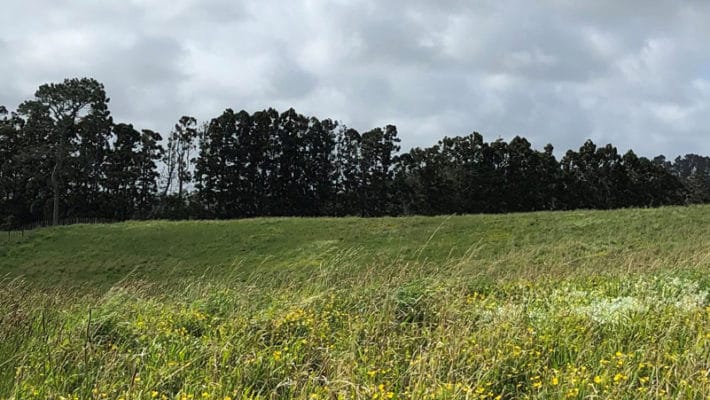WHAT WE DO
Land Contamination Services
Cato Bolam’s land contamination specialists provide the following services from initial Risk Assessment (HAIL) to Remediation and Validation for commercial and private clients:
- Pre-purchase soil characterisation sampling
- HAIL risk assessments
- Due Diligence Appraisals
- Baseline sampling for commercial development
- Preliminary Site Investigations (PSI)
- Detailed Site Investigation (DSI)
- Remedial Action Plans (RAP)
- Underground petroleum storage system investigation and reporting
- Consents and Approvals
- Contaminated Soil Management Plans (CSMP)
- Remedial Oversight
- Site Validation Reports (SVR)
- Works Completion Reports
- Ongoing Monitoring and Management Plans (OMMP)
- Commercial environmental management plans
- Groundwater investigations and monitoring
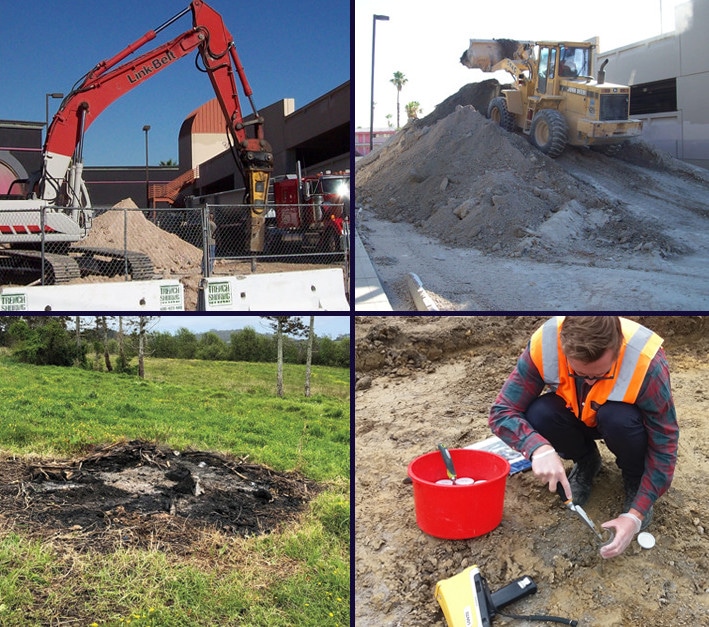
Investigations are overseen by a Certified Environmental Practitioner – Site Contamination Specialist and all reports are certified by a suitably qualified and experienced practitioner with over 25 years of experience in contaminated land investigations both in New Zealand and abroad.
Need advice on land contamination? Complete the form on our contact us page and one of our representatives will be in touch or contact our Land Contamination Principal, Greg Beck directly for an obligation free discusssion.

Land Contamination
Initial Risk Assessment (HAIL) to Remediation and Validation
Our Land Contamination specialists are highly qualified, experienced and respected in their field. They will work with you to find the best possible solution to any of your land contamination concerns.
Contamination investigations can be required when removing or upgrading underground petroleum storage systems or as a result of changes in the use of land that may be contaminated from historical land uses. Common contaminants include pesticides, gas and coal products, petroleum products, wood treatment chemicals, arsenic and lead.

Contaminated land is a problem when hazardous substances are at a concentration and/or are located where they have, or are reasonably likely to have, a significant adverse effect on human health or the environment. Contaminated land is a more urgent problem when contaminants are close to buildings, people, or sensitive habitats or may spread to groundwater or surface water. This is why careful investigation and management is required when petroleum storage systems are removed or land is to be subdivided or developed.

Find out what opportunities exist for your property.
Book a free discovery call today
FREQUENTLY ASKED
Land Contamination Questions
What do I have to do to meet the requirements of my Ongoing Monitoring and Management Plan?
An Ongoing Monitoring and Management Plan (OMMP) will generally require that soil, groundwater or both be periodically monitored to assure that human health and environmental risks remain at an acceptable level. In addition to preparing the OMMP, we can develop and maintain a sampling and reporting schedule that will allow you to meet all of the conditions of the OMMP and satisfy your consent conditions.
How can I prevent operations on my property from causing contamination?
We can work with you to develop an Environmental Management Plan (EMP) tailored to your specific business that establishes procedures for handling potentially toxic chemicals and other materials that may pose a risk to human health or the environment. The EMP will formalise operational procedures to minimize the chance of spills or other releases and list the steps that need to be taken in the event of an accident or spill.
Is contaminated land remediation required before development?
Contaminated land remediation is generally required when contamination is encountered during commercial development or as a condition on subdivision or land use consents and will need to be completed as part of the development process. In some instances, it may be more cost effective to manage contamination in place, through an Ongoing Monitoring and Management Plan, to minimize risks to human health and the environment rather than spend the money to remove the contamination. We know that every situation is unique and we will work with you to determine the most cost effective and logical solution for your contaminated land problem.
Who has experience in Land Contamination?
Land contamination services are provided by a limited number of consultancies. We have qualified experts in land contamination and, as a multi-discilplinary consutancy, can offer this service alongside all other specialist inputs required for a land development project.
Where can I find an experienced/reputable person for Land Contamination?
These services are provided by a limited number of consultancies. We have qualified experts in land contamination and, as a multi-disciplinary consultancy, can offer this service alongside all other specialist inputs required for a land development project.
Is my land contaminated?
Your land may have been identified as “potentially” contaminated because of past activities such as an orchard or commercial fuel storage but the only way to know if it is actually contaminated is by performing a site investigation that includes soil sampling. In the initial stages of the investigation we use a number of sources of information to determine potentially contaminating activities, including historical aerial photography, questions to landowners, Council property records, etc. If such activities are identified, we will likely carry out soil sampling in line with established practices to determine if contamination is present.
For commercial properties, it may be advisable to determine contamination conditions through a baseline investigation prior to constructing a petroleum station or other potentially contaminating facility. This can protect you from future litigation should contamination be discovered later. We can design a sampling plan to determine the contamination status of site soil and groundwater before construction begins.
How can we assist with your land contamination?
Guide to Land Contamination
The Resource Management Act defines contaminated land as “land that has a hazardous substance in or on it that has significant adverse effects on the environment or is reasonably likely to have significant adverse effects on the environment.” The National Environmental Standard for Assessing and Managing Contaminants in Soil to Protect Human Health and the Auckland Unitary Plan both set out standards for when a land contamination investigation and follow up work or consents may be required.
Our team of land contamination experts work closely with our Cato Bolam planners and engineers to assist in the consent application process. We can advise you on what the best approach to contamination investigation and cleanup may be for your situation. We also welcome questions about contamination, land contamination testing and what process may be best for you and your land.
Hazardous Activities and Industries List (HAIL)
The Resource Management (National Environmental Standard for Assessing and Managing Contaminants in Soil to Protect Human Health) Regulation 2011, commonly referred to as the NES, is a national standard relating to the identification and remediation of contaminated land. The NES applies to any land on which a potentially contaminating activity listed on the Hazardous Activities and Industries List (HAIL) is being undertaken, has been undertaken or is more likely than not to have been undertaken. If a HAIL activity has been identified on your property, the NES assumes that it could be contaminated and you may then be required to conduct a contamination assessment.
The HAIL lists a variety of activities that can potentially result in soil contamination on a piece of property. Common contaminants include heavy metals such as arsenic or lead, persistent pesticides such as DDT, petroleum hydrocarbons and asbestos. Some common contaminating activities include the following:
• Horticulture such as market gardens and glasshouses
• Landfilling
• Rubbish tipping and burning
• Automotive repair and panel beating
• Storage of treated timber
• Structures older than 40 years
When a Contamination Assessment is required
Once it has been established that one or more activities on the HAIL have occurred on the land and that the land is, therefore, covered by the NES, a determination must be made regarding whether the proposed development activity or activities is covered by the NES. The NES establishes five specific land development activities that may trigger the requirement to perform a site investigation for potential contamination. These activities are:
• Removal or replacement of an underground fuel storage system and associated soil
• Soil sampling
• Soil disturbance
• Subdivision of land
• Change in land use
The first two of these activities can generally be performed as permitted activities and will not trigger a requirement for a contamination assessment. The third activity, soil disturbance, can require an assessment of the volume of soil to be disturbed or removed from the site exceeds the criteria for a permitted activity. Subdivision and change in land use of a property on which HAIL activities have occurred are not considered to be permitted activities and will generally trigger a requirement for a contamination assessment.
Consenting under the NES
If there is no indication of a previous HAIL activity (or the potential for it) in the council records, then the NES does not apply, and any planned development activity can be carried out as a permitted activity.
A PSI is required if you want to subdivide or change land use as a permitted activity, and the PSI must conclude that the activity is highly unlikely to pose a risk to human health if done.
If the development activity cannot comply with permitted activity requirements, then a consent application must be submitted for one of the following three types of activity:
• Controlled activity.
• Restricted Discretionary activity.
• Discretionary activity.
For the application to be considered as either a controlled or restricted discretionary activity, the NES requires that a Detailed Site Investigation (DSI) be submitted with the application. The actual activity depends upon whether soil contamination was found in excess of the applicable human health standards.
Auckland Unitary Plan (AUP)
While the primary focus of the NES regarding development activities and contaminated land is the risk posed to human health, the Auckland Unitary Plan (AUP) focuses on risk to the environment and establishes different standards than the NES. As a result, the scope of any contaminated land investigation in the Auckland Council area will have to encompass requirements of both the NES and the AUP. The soil contaminant standards established in the NES for protection of human health are generally more conservative than the permitted activity soil acceptance criteria established in the AUP, but there are some significant exceptions. The AUP soil acceptance criteria standards for several metals and pesticides are significantly lower than the corresponding human health standards established in the NES. When the applicable soil acceptance criteria under the AUP is exceeded, the development activity meets the criteria of a controlled activity regardless of whether it would be a permitted activity under the NES.
The most significant difference between the NES and the AUP involves when concentrations of contaminants exceed established background levels but not other relevant human health or environmental standards. Under the NES, the presence of soil concentrations above background but below relevant human health standards would not necessarily pose an issue relative to the development activity being considered a permitted activity. However, under the AUP, the presence of soil concentrations above background will automatically require that the development activity receive a consent from Auckland Council as a controlled activity regardless of whether the applicable permitted activity soil acceptance criteria has been exceeded.
In summary, both the NES and the AUP need to be consulted.
Suitably Qualified and Experienced Practitioner (SQEP)
The NES requires that a suitably qualified and experienced practitioner (SQEP) certify preliminary and detailed site investigation reports. The NES does not establish the qualifications for a SQEP but the NES User’s Guide describes the person certifying the report on behalf of their company as being a senior or principal scientist/engineer with a relevant tertiary education and at least 10 years of related (contaminated land) experience. Cato Bolam staff are both qualified in land contamination and SQEP certified.
Soil Sampling and Analysis
Strict decontamination protocols for sampling equipment need to be employed to avoid cross-contamination during sampling.
Sampling equipment used can range from a hand trowel for near-surface sampling to a hand auger or truck-mounted drill rig for deeper sampling.
Samples are collected according to the sampling plan and the number of samples collected is dependant upon factors including the size of the property and the extent of potentially contaminating activities identified on the property.
Once collected, soil samples are immediately placed in pre-labelled laboratory-supplied sample containers, transferred to a chilly bin and transported to the laboratory as soon as possible.
Analysis, including for quality assurance and quality control, is performed by an appropriately accredited analytical laboratory.
Laboratory reported concentrations are then compared to applicable human health and environmental guideline values.
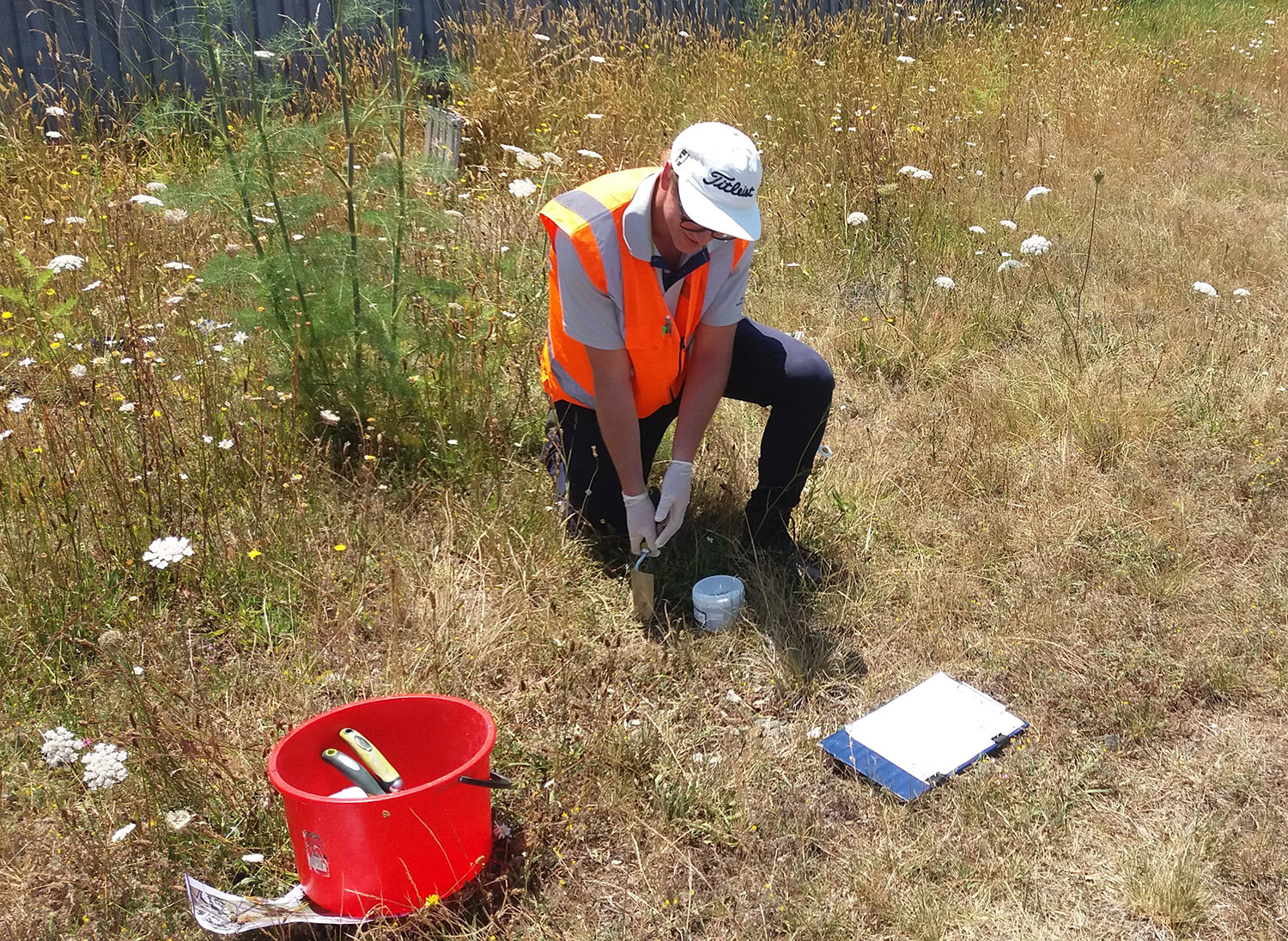
Field Screening
In-place screening of soil for the presence of metals can be carried out using an x-ray fluorescence refractometer (XRF). Cato Bolam has the latest equipment available.
Numerous XRF readings are collected to give an early indication of whether concentrations of any metals in the soil exceed relevant human health or environmental guidelines.
Identified areas of contamination can be further investigated during the initial site visit.
Soil samples are collected from select screening locations and submitted to an accredited analytical laboratory for metals analysis to confirm the accuracy of the XRF readings.
Field screening using the XRF can also be used as an initial indicator of when remedial excavation of contamination has met the adopted remedial goals.
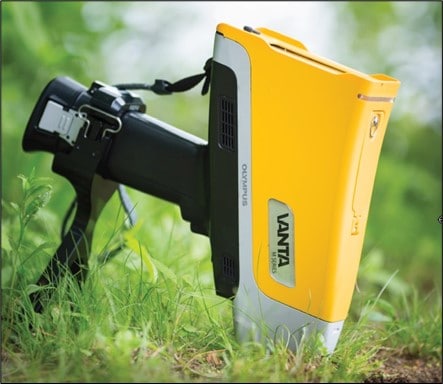
Preliminary Site Investigation (PSI)
As implied by the name, the PSI is a preliminary look at the history and potential contamination status of a property to evaluate whether the property has a history of potentially contaminating activity covered by the NES. The scope of work for a PSI includes the following:
• Gather readily available information about the property from council records, historical aerial photographs, personal interviews and other sources to identify past practices, including HAIL activities, that may have contributed to contamination of the property.
• Conduct an inspection of the property to identify site features, land uses and potential sources and areas of contamination.
• Collect and analyse preliminary soil samples to identify contamination on the property (optional).
• Evaluate the suitability of the property for its current or intended land use.
• Assess the status of the proposed site activities for compliance with the NES and regional and/or territorial plans.
• Assess the risk to human health and the environment from actual or potential soil contaminants on the property.
• Make recommendations regarding the necessity for additional investigation of the property.
If no HAIL activities associated with the property are identified, the PSI will conclude that the property is not covered under the NES and the proposed activity is permitted. If the property is covered under the NES but preliminary sampling finds no contamination in excess of human health guidelines, the PSI will conclude that it is highly unlikely that the property poses a significant risk to human health and that the proposed activity is permitted. If preliminary sampling finds contamination in excess of human health guidelines, the data can be incorporated directly into the follow-up Detailed Site Investigation (DSI).
Detailed Site Investigation (DSI)
As part of the due diligence process it is highly recommended that common constraints be identified and investigated.
The DSI includes many of the desktop review methods employed in a PSI to identify sources and locations of potential soil contamination but also involves intrusive techniques to collect field data and soil samples for analytical testing to confirm the presence of contamination and determine the concentrations and locations of the contaminants of concern.
The scope of work for a DSI includes the following:
• Review readily available information about the property from council records, historical aerial photographs, personal interviews and other sources to identify past practices, including HAIL activities, that may have contributed to contamination of the property.
• Conduct an inspection of the property to identify site features, land uses and potential sources and areas of contamination.
• Conduct an intrusive site investigation including collection and analysis of soil samples to assess the actual extent and concentrations of contaminants in all appropriate site media.
• Assess laboratory results against environmental and human health guideline values for the current and future proposed land use.
• Evaluate any potential effects of contaminants on public health, the environment and structures.
• Recommend, as necessary, clean-up, management or ongoing monitoring for the property.
If soil sampling finds no contamination in excess of established background levels, the DSI will conclude that the NES does not apply. If sampling finds contamination in excess of background levels but below human health guidelines, the DSI will conclude that the proposed development activity is a controlled activity. Otherwise, the proposed development activity is a restricted discretionary activity (i.e. a consent is necessary) and preparation of a Remedial Action Plan (RAP) will be required.
We welcome any questions related to soil contamination testing NZ standards and processes.
The Remediation Process
Once the existence of contamination on the property at concentrations above applicable environmental or human health protection levels has been established through either a PSI with sampling or a DSI, a series of actions will be required to determine the most appropriate method to mitigate the identified risks. This process will involve one or more of the following stages:
1. Remedial Action Plan (RAP).
2. Remediation.
3. Site Validation Report (SVR).
4. Ongoing Monitoring and Management Plan (OMMP).
These stages are further explained below
Remedial Action Plan (RAP) Stage
Once the property has been identified as requiring remediation or management, a RAP should be prepared to establish the following:
• Summarise the findings and conclusions of previous environmental investigations of the property.
• Identify remediation goals and establish clean-up levels.
• Discuss available remedial options.
• Identify the selected remedial option and discuss the rationale for selecting that option.
• Prepare a site management plan to be used during remediation.
• Establish the validation sampling methodology to document that remedial goals have been met following remedial works.
• Delineate contingency actions to be taken if the adopted remedial strategy fails to achieve the expected remedial goals.
• Identify on-going monitoring or long-term management plans required for the site following completion of remedial actions.
The RAP will generally be submitted along with the PSI or DSI as part of the resource consent application. Once the consent is granted, implementation of the RAP will be included as a condition of consent. Less commonly, the RAP will not have been completed before the application is submitted and preparation and approval of the RAP is then included as a condition of consent.
Remediation Stage
Project design is an exciting step in the process it paints the picture of what will become the new environment for your site. The common steps undertaken are:
Once the consent is granted and the RAP has been approved, remedial action can be taken to mitigate the contamination, through physical removal and disposal, on-site destruction, or on-site management. The stages of the remediation process include:
• Engage a suitably qualified contractor to deal with the remedial activities.
• Clearly delineate the area of contamination that will be remediated.
• Contact the appropriate district and/or regional authorities prior to initiation of field activities.
• Implement the site management plan included in the RAP.
• Typical remediation will involve excavation of contaminated soil with transport and disposal at a managed landfill.
• Collect validation samples from the excavation to document that remedial goals have been met following remedial works.
• Implement established contingency actions if validation sampling indicates that the remedial goals have not been met.
• Validate that any soil brought onto the property to backfill the remedial excavation meets cleanfill standards.
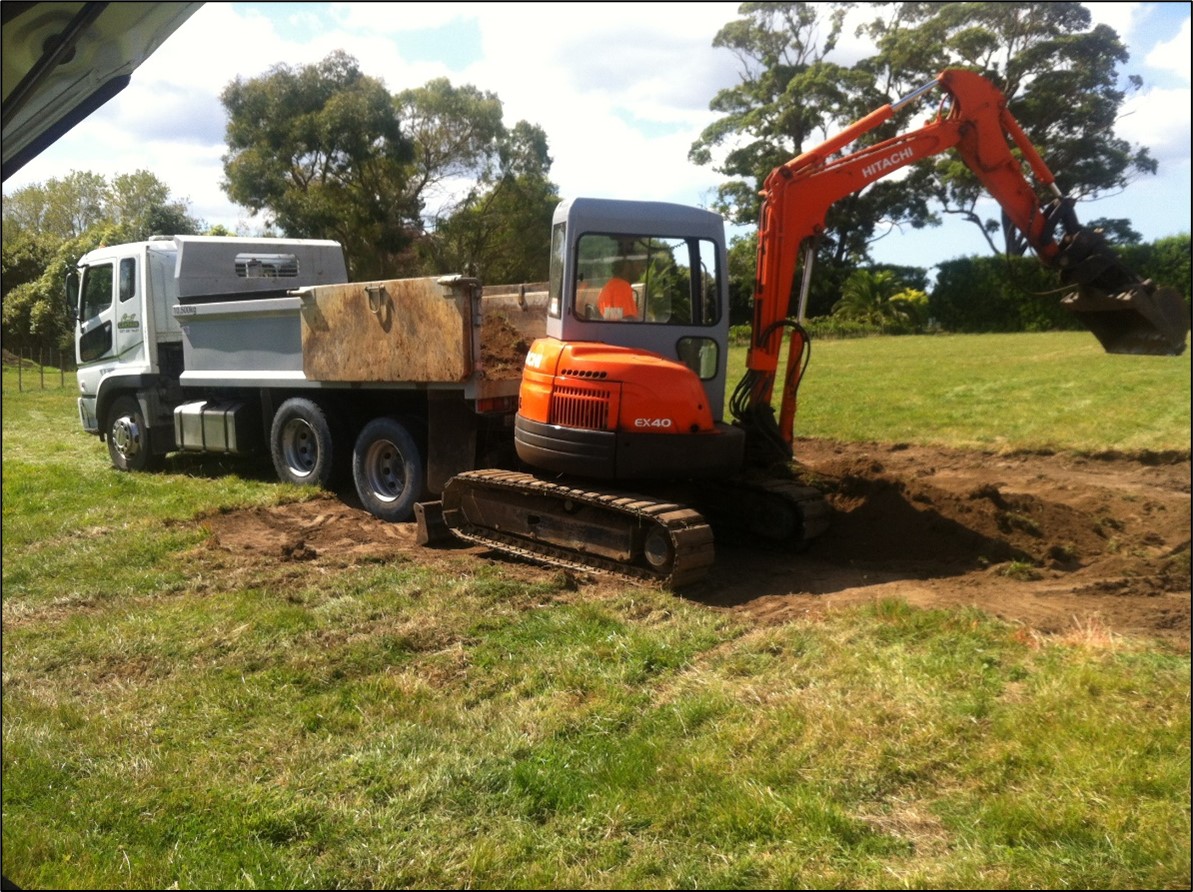
Site Validation Stage
After remedial or management action, the site must be assessed to validate that the objectives stated in the RAP have been achieved. The results of the validation are documented in the Site Validation Report (SVR). The main elements of the SVR are as follows:
• Document that remediation has been performed in accordance with the RAP.
• Assess the results of validation sampling against clean-up criteria stated in the RAP.
• Verify compliance with regulatory requirements set by all relevant local authorities.
• Verify that any material removed from the property has been received by an appropriate disposal facility.
• Evaluate the necessity for future monitoring or management of soil contamination remaining at the property.
Preparation and submission of the SVR will be a condition of consent and the SVR must be submitted to council within three months of completion of remediation. Acceptance of the SVR by Council will generally satisfy any remaining consent conditions related to contamination and ultimately contribute to obtaining the “sign-off” section 224(c) from Council.
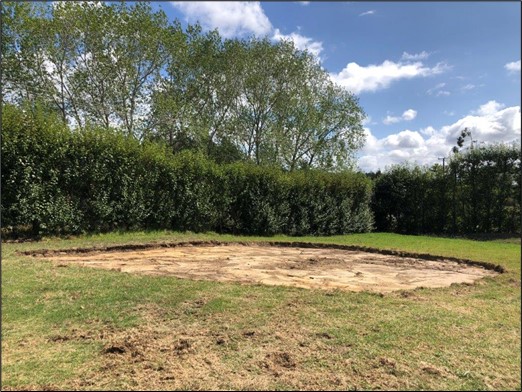
Ongoing Monitoring and Management Stage
There are certain situations where an Ongoing Monitoring and Management Plan (OMMP) will be required for a property following submission of a Site Validation Report. An OMMP should be considered when one or more of the following applies:
• Full clean-up is not possible or preferable.
• Monitored natural attenuation is selected as the preferred remedial option.
• On-site containment of contamination is proposed.
A monitoring programme should detail:
• The proposed monitoring strategy.
• What will be monitored.
• The location and frequency of monitoring.
• The reporting requirements, including format, content and frequency.
• The proposed period for reviewing the OMMP.
If a management plan is used as the primary means of reducing risk, its application and effectiveness must be reported to the relevant authorities at least annually.
Estimating Costs
Contamination assessment costs can be extremely variable. Cato Bolam recommends getting sound professional advice when considering any project. A number of variables must be taken into account when estimating costs for assessing and cleaning up a property. Variables that can have a significant impact on costs include:
• The size of the property to be investigated and the proposed development activity.
• The type and extent of HAIL activity on the property.
• The specific nature of the contamination (metals, petroleum hydrocarbons, pesticides, asbestos) and concentrations.
• The depth and volume of contamination to be remediated.
• Site-specific constraints on remediation such as physical barriers or challenging soil conditions.
Glossary of Land Contamination Terms
Auckland Unitary Plan (AUP)
The Auckland Unitary Plan is the key planning and policy document to organise and control development and activities within Auckland by determining:
• What can be built and where.
• How a high quality and more compact Auckland can be created in a way that is coordinated with infrastructure provision and without adversely impact natural and physical resources, or cultural and historic heritage values.
• How rural activities can be provided; and
• How the natural environment can be maintained to uphold life supporting functions and / or recognised / distinct values and qualities.
Contaminated Land Management Guidelines (CLMG)
A collection of five guidelines published by the Ministry for the Environment that establish procedures for many aspects of contaminated land assessment, including application of New Zealand and international guideline values, reporting on contaminated sites, risk screening and site investigation and analysis of soils.
Detailed Site Investigation (DSI)
A contamination assessment involving intrusive techniques to collect field data and soil samples for analytical testing to determine the concentrations of contaminants of concern.
Hazardous Activities and Industries List (HAIL)
A compilation of activities and industries published by the Ministry for the Environment that are considered likely to cause land contamination resulting from hazardous substance use, storage or disposal. The HAIL is incorporated into the NES by reference and determines whether a site is considered to be a ‘piece of land’ and, therefore, falls under the NES.
National Environmental Standard for Assessing and Managing Contaminants in Soil to Protect Human Health (NES)
The Ministry for the Environment standard establishing regulations for five land use activities, including setting soil contaminant standards protective of human health and ensuring best practice and consistent reporting on land affected or potentially affected by soil contamination that poses a potential risk to human health.
Ongoing Monitoring and Management Plan (OMMP)
A plan that establishes protocols for long-term monitoring and managing of contamination remaining on the site once remedial activities are completed.
Piece of Land
Any portion of a property on which hazardous activities are being, have been, or are more likely than not to have been undertaken, rather than the whole property parcel. The NES applies to the ‘piece of land’ on which the HAIL activity is located not, necessarily, to the entire property.
Preliminary Site Investigation (PSI)
A desktop study designed to gather information about a piece of land to determine whether it may potentially be contaminated, to assess the suitability of the land for its current or intended land use and to design a detailed site investigation (if required).
Remedial Action Plan (RAP)
A document that establishes remediation or management goals and procedures designed to minimise or eliminate risk to human health or the environment posed by contamination identified on a site.
Site Validation Report (SVR)
A post-remediation report documenting application of the remedial action plan, any variances from the proposed plan and the results of validation sampling. The site validation report assesses the results of the post-remediation testing against the clean-up criteria stated in the remedial action plan.
Suitably Qualified and Experienced Practitioner
A contaminated land professional with a thorough understanding of contaminated land assessment and a suitable number of years of related experience sufficient to allow certification of appropriate contaminated land documents under the NES.



